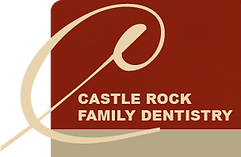Flossing: The neglected habit

I often wonder what makes flossing the neglected stepchild of good oral health practices. It’s probably different for everyone, but I’ve come up with a couple of ideas. For one, when you wake up in the morning, the specter of morning breath haunts you until you’ve brushed your teeth. With that job completed, the difference in freshness is so great, the impetus for oral health care has passed. For another, if you haven’t flossed in a while, it doesn’t feel great and can leave your gums feeling swollen. The reality is, even the toothbrush doesn’t care much for floss.

Whatever it is, our seemingly innate desire to get out of flossing will allow us to believe almost any marketing ploy. Just like late night infomercials with promises of incredible weight-loss without making any lifestyle changes, our desire for these things to be true overrides our common sense. If any mouthwash can adequately clean between your teeth, it certainly should take care of the job on the fronts and backs as well. If this is the case, why bother brushing. “Not brush, that’s madness!” I agree, it is madness, but so is not flossing. The reality is, flossing is just brushing the sides of our teeth and should be performed that way.
What kind of flossing regimen should I have?
For most people, flossing once a day is adequate. When flossing correctly, it will take about 2-3 minutes. Ideally, flossing before bed is best, but I hesitate to change the habits of an established daily flosser. Flossing before bed reduces the plaque build-up on your teeth during the whole night. The most important things are routine and proper technique.
There is a technique to sliding a piece of string between your teeth?
I’ve had patients with gingivitis who tell me they floss every single day. Non-flossers will certainly exaggerate the flossing they actually do, but rarely will they claim to be everyday flossers.

When I ask these people to demonstrate, they pop the floss in and out of their teeth so fast my head starts spinning. The proper technique is as follows.
Take a length of floss approximately 18 inches and wrap the bulk around your middle finger.
Take the remaining floss and wrap around the middle finger of your opposite hand leaving 2-3 inches between.
Gently pass the floss between your teeth using your thumbs and index fingers and bend the floss in a C shape around the tooth you are to clean. Move the floss up and down along the side of your tooth rather than taking it in and out or side to side. Be sure to allow the floss to go below the gum line.
Bend the floss against the other tooth and repeat step 3.
As you fray or soil the floss, spool the floss from the hand with the bulk wrap to the opposite hand.
This is aptly called the spooling technique. There is also the loop technique in which you tie the ends of an 18 inch piece of floss secured with three knots. Place all fingers except the thumb inside the loop using your index fingers to guide floss through the lower teeth and your thumbs to floss the upper teeth. All other steps are the same. This is helpful for people with limited dexterity. Feel free to ask your dentist or hygienist to demonstrate this technique.
Waxed, unwaxed, and tape oh my?!? Which kind of floss should I use?
The reality is whichever floss you WILL use is the floss you should use. There are many kinds of floss and each has advantages and disadvantages. For those who have a lot of crowns and bridges, wider floss or dental tape may be beneficial. For those with very tight contacts, waxed floss may be helpful as it slips between teeth easier making it less likely to break. If you like to hear your teeth squeak when they are clean, unwaxed floss is the ticket.
For some people the long string of floss is too difficult or inconvenient. Pre-threaded flossers or floss holders can be a real hit. These can be particularly helpful for parents teaching kids to floss, parents flossing for their children, and caretakers who floss other’s teeth. Remember, children should begin flossing as soon as their teeth touch each other and they will need assistance.
I have a waterpick, so I can skip over all of this, right?
Irrigation devices can play a helpful role in good oral health practices, but it does not replace flossing. As discussed in an earlier post, plaque needs to be mechanically removed and waterpicks just can’t do it. Keep flossing!!
If you have any questions about flossing technique or which kind of floss to use, don’t hesitate to ask your dentist or hygienist.























